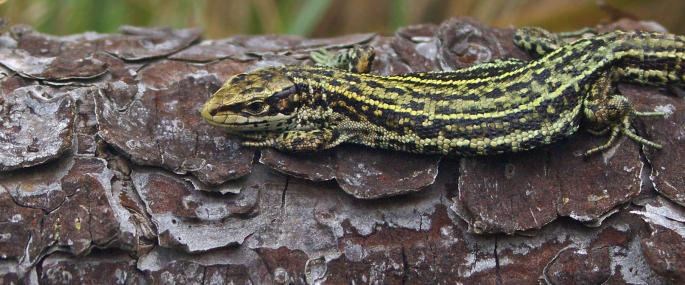The common lizard is the UK’s most common and widespread reptile. It is the only reptile native to Ireland. It is found across many habitats including heathland, moorland, woodland and grassland where it can be seen basking in sunny spots. Also known as the viviparous lizard, the species is unusual among reptiles for ‘giving birth’ to live young rather than laying eggs.
The loss of our heathland and grassland habitats through human activity threatens the survival of our reptiles. The Wildlife Trusts are working closely with planners, developers and farmers to ensure these habitats are protected by fostering Living Landscape schemes: networks of habitats and wildlife corridors across town and country, which are good for both wildlife and people. You can help: look after lizards and other reptiles in your garden by leaving piles of logs for hibernating beneath. In partnership with the RHS, The Wildlife Trusts' Wild About Gardens initiative can help you plan your wildlife garden.
